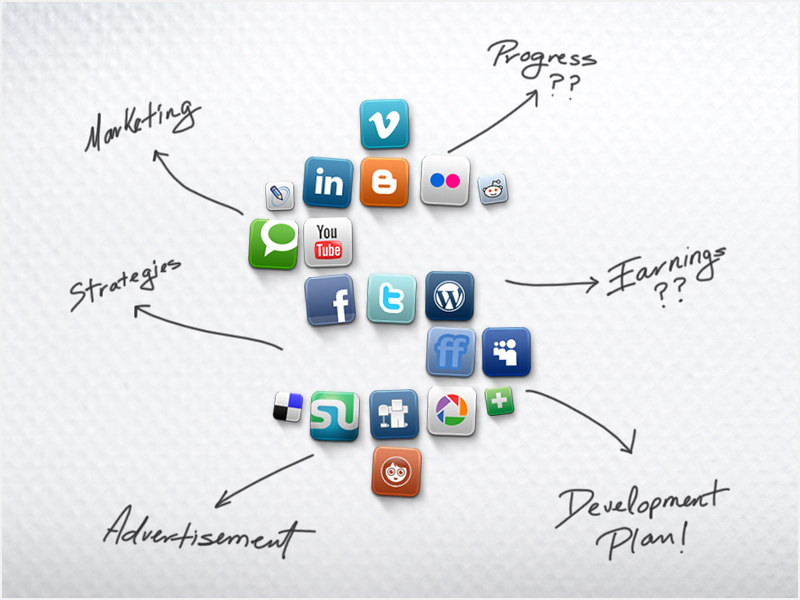
In today’s fast-paced, ever-evolving professional landscape, staying informed about the latest industry trends is not just an advantage—it’s a necessity. The world of work is in constant flux, with new technologies, regulations, and market conditions emerging rapidly. For professionals across industries, keeping up with these changes is critical to remaining competitive, innovative, and effective in their roles.
Given the importance of staying updated, the methods by which professionals access information have become a topic of interest. A recent poll revealed a clear preference for online news and blogs as the primary sources for staying informed. This preference underscores the changing nature of how we consume information and highlights the role of digital media in shaping professional knowledge. This article delves into the reasons behind this trend and explores the relative merits of other information sources, such as professional networks, webinars, conferences, and industry-specific podcasts and videos.
What is your preferred method for staying updated on industry trends and news?
byu/dinalecobieh inpolls
The Rise of Online News and Blogs
Online news and blogs have become the go-to sources for professionals seeking to stay current with industry trends. This preference is largely due to the accessibility and convenience that digital media offers.
Accessibility and Convenience
One of the primary reasons online news and blogs dominate as information sources is their unparalleled accessibility. In an age where time is a precious commodity, professionals appreciate the ability to access news and articles at any time, from anywhere. Whether on a morning commute, during a lunch break, or while winding down in the evening, online platforms provide immediate access to the latest developments in one’s field.
Moreover, the convenience of digital media extends beyond mere access. The rise of mobile technology means that industry updates are just a tap away, making it easier than ever to stay informed without interrupting daily routines. This level of accessibility has transformed how professionals engage with information, allowing them to integrate learning seamlessly into their lives.
Variety and Depth of Content
Another significant advantage of online news and blogs is the sheer variety of content available. Traditional media outlets often focus on broad topics that appeal to a wide audience, but online platforms cater to niche interests and specialized fields. For professionals looking to dive deep into specific areas of their industry, online blogs and news sites offer in-depth analysis, expert opinions, and detailed reports that are often hard to find elsewhere.
This variety is particularly valuable in complex industries where staying informed requires more than just headline news. Online blogs and news platforms often cover emerging trends, new technologies, and case studies that provide valuable insights. For instance, a professional in the tech industry might rely on blogs dedicated to AI or cybersecurity to stay ahead of the curve, while someone in healthcare might turn to specialized medical news sites for the latest research and developments.
Credibility and Timeliness
In addition to accessibility and variety, online news and blogs are valued for their credibility and timeliness. Established online news outlets and respected industry blogs often feature contributions from experts, ensuring that the information is reliable and up-to-date. In rapidly changing industries, the ability to access timely information can make a significant difference in decision-making processes.
Furthermore, the real-time nature of online news means that professionals can stay informed about breaking developments as they happen. Unlike traditional media, which may have a delay between events and reporting, online platforms can update content instantly, providing a continuous stream of the latest information.
The Role of Professional Networks and Communities
While online news and blogs are the most popular sources of information, professional networks and communities still play a crucial role in how some professionals stay informed.
Networking as a Source of Information
Professional networks—whether through formal associations, LinkedIn groups, or informal gatherings—offer a unique source of information that digital media cannot replicate. These networks provide access to insider knowledge, shared experiences, and the collective wisdom of peers and mentors. Engaging in discussions with colleagues who face similar challenges can lead to practical insights that are directly applicable to one’s work.
For many professionals, networking is not just about career advancement; it’s also about learning. By participating in professional communities, individuals can stay informed about the latest trends, tools, and best practices in their industry. This knowledge is often contextualized by the experiences of others, making it highly relevant and actionable.
Limitations of Professional Networks
However, the poll results indicate that professional networks and communities are not the primary source of information for most professionals. This could be due to several limitations associated with networking as a method for staying informed.
First, networking requires time and effort to build and maintain relationships, which may not always be feasible for busy professionals. Additionally, the information exchanged within networks may be limited in scope, depending on the diversity and expertise of the individuals involved. Unlike online platforms, which offer a vast array of perspectives and insights, professional networks might provide a narrower view, influenced by the specific experiences of the group.
Combining Networks with Digital Sources
Given these limitations, it’s important to recognize that professional networks should not be relied upon in isolation. Instead, they can be most effective when combined with other sources of information, such as online news and blogs. By integrating the personalized, experience-based knowledge gained from networking with the broader, more comprehensive insights available online, professionals can achieve a well-rounded understanding of their industry.
Webinars and Conferences: In-Depth Learning
Webinars and conferences, though less favored in the poll, still hold significant value for those seeking in-depth learning opportunities.
The Value of Interactive Learning
Webinars and conferences offer a level of interactivity that is unmatched by other information sources. These events provide opportunities for direct engagement with industry experts, allowing attendees to ask questions, participate in discussions, and gain insights that are often not available through written content alone.
For professionals who thrive on real-time interaction and prefer to learn through dialogue, webinars and conferences can be particularly beneficial. These events often cover specific topics in great detail, providing attendees with a deep understanding of complex issues. Additionally, the networking opportunities available at conferences can lead to valuable connections and further learning opportunities.
Challenges in Participation
Despite their benefits, webinars and conferences also come with challenges that may explain their lower popularity in the poll. Time commitment is a significant factor—attending a conference or even a lengthy webinar requires setting aside dedicated time, which may not be feasible for all professionals. Additionally, some events may involve costs, making them less accessible than free online content.
Another challenge is the variability in the quality of these events. Not all webinars and conferences deliver the same level of value, and professionals may find it difficult to identify the most worthwhile opportunities. This can lead to wasted time and resources, further discouraging participation.
Maximizing the Impact of Events
To overcome these challenges, professionals should be selective about the webinars and conferences they attend. Researching speakers, reading reviews, and considering the relevance of the event’s content can help ensure that the time invested in these events is well spent. By focusing on high-quality events that align with their specific learning goals, professionals can maximize the impact of webinars and conferences on their knowledge and skills.
Industry-Specific Podcasts and Videos
Although industry-specific podcasts and videos were the least favored in the poll, they remain a valuable resource for a niche audience.
The Appeal of Audio-Visual Content
Podcasts and videos offer a different mode of learning that appeals to those who prefer audio-visual content. For busy professionals, podcasts are particularly convenient, as they can be consumed during commutes, workouts, or other activities where reading isn’t practical. Videos, on the other hand, often provide visual demonstrations and engaging presentations that can enhance understanding of complex topics.
Niche Audiences and Content Specialization
One of the strengths of podcasts and videos is their ability to cater to niche audiences. Many industry-specific podcasts and video channels focus on highly specialized topics, providing deep dives into areas that might not be covered in mainstream media. For professionals looking for content that is tailored to their specific interests, these platforms can be invaluable.
However, the specialized nature of these formats also means that they may not appeal to a broad audience. This could explain their lower popularity in the poll—while they are highly valued by those who use them, they may not be relevant or accessible to all professionals.
Overcoming the Challenges of Discoverability
A common challenge with podcasts and videos is discoverability. With an overwhelming amount of content available online, finding high-quality, relevant audio-visual material can be difficult. To address this, professionals should leverage recommendations from colleagues, online reviews, and curated lists to identify the best resources. By focusing on reputable sources, professionals can ensure that the time they spend on podcasts and videos is both enjoyable and educational.
Conclusion
In conclusion, the poll results highlight the dominance of online news and blogs as the preferred method for staying informed about industry trends. This preference is driven by the accessibility, variety, and credibility of digital media, making it an indispensable tool for professionals across industries. However, it’s important to recognize the value of other information sources, such as professional networks, webinars, conferences, and industry-specific podcasts and videos.
Each of these methods offers unique benefits that can enhance a professional’s knowledge and understanding of their field. By combining different sources of information, professionals can stay well-rounded and fully informed, ensuring that they remain at the forefront of industry developments.
Call to Action
As you reflect on your methods for staying informed, consider whether you are making the most of the resources available to you. Are you relying too heavily on one source of information, or are you diversifying your approach to gain a comprehensive understanding of your industry? By exploring new ways to stay updated—whether through online news, networking, webinars, or podcasts—you can enhance your professional knowledge and stay ahead in your field.






